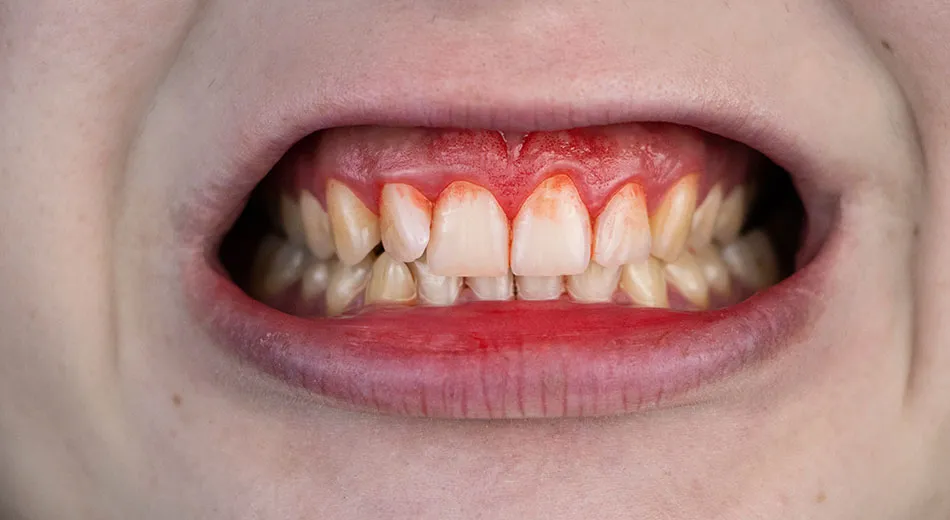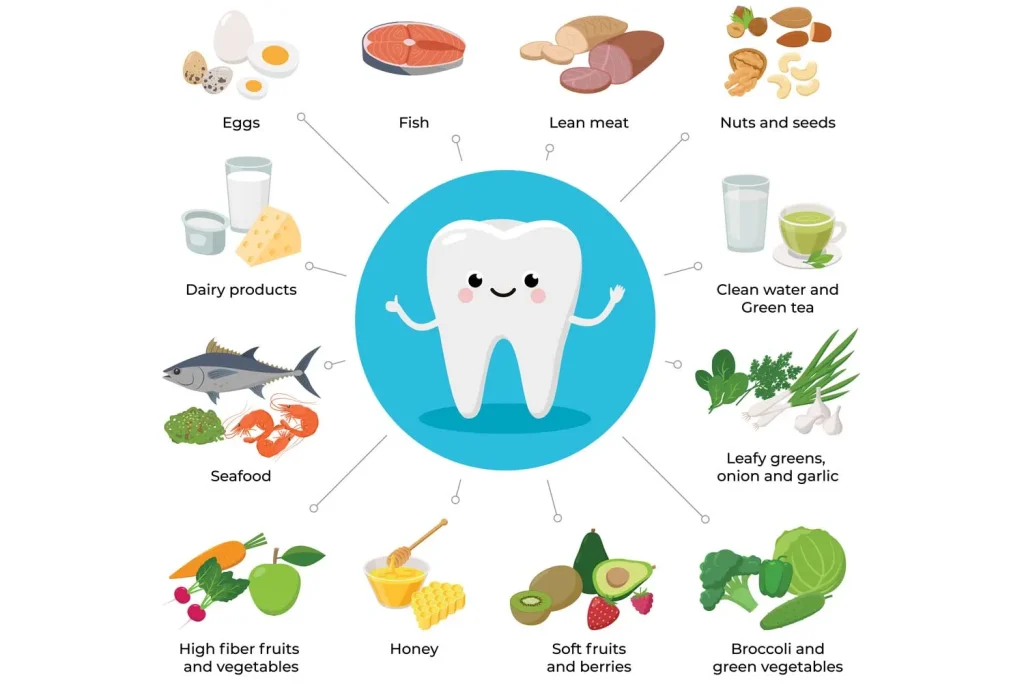Gum disease is a common oral health issue that affects millions of people worldwide. It starts with bacterial growth in the mouth, leading to inflammation. If left untreated, it can cause serious damage to the gums and even result in tooth loss. While gum disease can be mild, such as gingivitis, it can progress into more severe forms, impacting not only oral health but overall well-being.
Understanding the root causes of gum disease and knowing how to prevent it is essential for maintaining a healthy smile and avoiding long-term dental problems. In this article, we’ll explore the most common causes of gum disease and provide practical tips for prevention.
What are Gum Disease, Gingivitis, and Periodontitis?
Gum disease, or periodontal disease, is an infection of the tissues that support your teeth. It starts when plaque, a sticky film of bacteria, builds up on the teeth. If not removed through proper oral care, plaque can cause inflammation and infection in the gums.
Gingivitis is the early stage of gum disease. It happens when plaque irritates the gums, making them red, swollen, and likely to bleed during brushing or flossing. While gingivitis is usually painless, it can be reversed with regular brushing, flossing, and using an antigingivitis mouthwash. Regular dental check-ups are also important to stop gingivitis from worsening.
However, if untreated, gingivitis can lead to a more serious condition called periodontitis. In this stage, the gums and bone pull away from the teeth, forming infected pockets. As periodontitis progresses, it can damage the tissues and bone supporting your teeth, which may result in tooth loss.
By maintaining good oral hygiene and catching gum disease early, you can prevent both gingivitis and periodontitis from becoming severe.

So, What Causes Early Gum Disease or Gingivitis?
Gingivitis, a common form of gum disease, is primarily caused by the build-up of bacteria in the mouth. The sticky bacteria, known as plaque, accumulates on the teeth when proper oral hygiene, such as brushing, flossing, and using mouthwash, is neglected. Over time, this plaque leads to inflamed and infected gums, ultimately resulting in gum disease. Several other factors, such as tobacco use, certain medications, hormonal changes, and underlying medical conditions like diabetes, can also contribute to the development of gingivitis.
Smoking or Chewing Tobacco
Can smoking cause gum disease? Yes, research shows that smokers are significantly more likely to develop gum disease compared to non-smokers. Moreover, smoking can hinder the body’s immune response, making it harder to treat gum disease effectively. Quitting tobacco is essential for reducing the risk of gum disease and managing existing infections.
Hormonal Shifts in Women
Hormonal changes, especially during pregnancy, can increase a woman’s susceptibility to gingivitis. Pregnancy-related hormonal fluctuations can cause gums to become inflamed and more prone to infection. Additionally, some pregnant women may neglect regular dental care, exacerbating the risk. Fortunately, gingivitis symptoms usually improve after childbirth. Maintaining good oral hygiene during pregnancy is crucial, as some studies have linked oral infections to gestational complications.
Prescription Medications
Certain medications can contribute to gingivitis, causing gum inflammation. Drugs like anticonvulsants, calcium channel blockers, and immunosuppressants can lead to swollen, bleeding gums.
Nutritional Deficiencies
A diet lacking essential nutrients can affect gum health. Vitamin C, vitamin D, and calcium are important for maintaining healthy gums and teeth. Omega-3 fatty acids, when combined with professional dental care, have been shown to help manage more severe forms of gum disease.
Family History of Gum Diseases
Genetics can also affect a person’s risk of developing gingivitis. A family history of gum disease can lead to inherited tendencies, including poor oral hygiene habits, limited access to preventive care, and medical conditions like diabetes, which increase susceptibility to gum disease.
Poor Oral Hygiene
Consistent and proper oral hygiene is the best defense against gum disease. Brushing, flossing, and using an antimicrobial mouthwash daily can reduce plaque build-up and promote healthier gums.
Aging and Increased Risk
Older adults are more vulnerable to gum disease due to weaker immune systems and a higher likelihood of tooth loss, which can lead to nutritional deficiencies. Age-related factors like arthritis can make maintaining good oral hygiene more challenging, further increasing the risk of gum disease in older individuals.
By understanding these factors and taking preventive measures, individuals can significantly reduce their risk of developing gingivitis and more advanced forms of gum disease.

How To Prevent Gum Disease
Preventing gum disease involves consistent oral care and healthy lifestyle choices. Here are key steps to help protect your gums:
1. Brush Regularly
Brushing twice a day is one of the most important steps to prevent gum disease. Use a fluoride toothpaste to strengthen your teeth and protect against decay. Make sure to use a soft-bristle toothbrush, as hard bristles can damage the enamel and irritate the gums. Be thorough when brushing, focusing on the gumline, the back teeth, and the tongue. Electric toothbrushes can be more effective at removing plaque than manual brushing.
2. Floss Daily
Flossing removes plaque and food debris between your teeth and under the gumline, which your toothbrush can’t reach. This helps to prevent plaque build-up, which can cause gingivitis. Proper flossing technique is important: gently guide the floss between your teeth, curve it around each tooth in a C-shape, and move it up and down along the side of each tooth. Using floss picks or water flossers can be a good alternative for those who struggle with traditional flossing.
3. Use Antibacterial Mouthwash
Rinsing with an antibacterial or antigingivitis mouthwash helps kill bacteria that cause gum inflammation and plaque formation. Look for mouthwashes that contain ingredients like chlorhexidine, cetylpyridinium chloride, or essential oils, which can reduce plaque and improve gum health. Using mouthwash after brushing and flossing can provide additional protection, reaching areas of your mouth that brushing and flossing might miss.
A great example of such a product is GINGIVAL PRO+, which not only contains potent ingredients but also provides additional benefits for oral health.

Key Ingredients:
- Chlorhexidine Digluconate 0.2%: The primary ingredient in GINGIVAL PRO+, Chlorhexidine Digluconate, is a powerful antimicrobial agent. It inhibits the growth of microorganisms in plaque, thus preventing gum inflammation and protecting against gingivitis.
- Roman Chamomile Extract: Known for its soothing properties, Roman Chamomile helps relieve pain, reduce inflammation, and promote faster wound healing in the gums.
- Green Tea Extract: This natural extract helps reduce plaque formation, fights bad breath, has antibacterial properties, and provides antioxidant benefits.
- Aloe Leaf Extract: Aloe helps cool and soothe the gums and promotes rapid healing of oral wounds.
Uses:
- Prevention of Tooth Decay: Regular use of GINGIVAL PRO+ helps prevent the onset of cavities by reducing harmful bacteria in the mouth.
- Gum Health: It provides intensive care for gum problems, especially for individuals prone to gingivitis or periodontitis.
- Plaque Control: The mouthwash is highly effective in cases of excessive plaque formation, helping to reduce plaque build-up that can lead to gum disease.
- Post-Periodontal Surgery: GINGIVAL PRO+ is recommended for use after periodontal surgery or other oral-related procedures to support healing and protect against infection.
4. Quit Tobacco
Tobacco use is a major risk factor for gum disease. Smoking reduces blood flow to the gums, which impairs the healing process and makes the gums more susceptible to infection. Smokers are more likely to develop tartar buildup and have a higher chance of tooth loss from periodontitis. Quitting smoking or chewing tobacco not only reduces the risk of gum disease but also improves the success rate of dental treatments for those with existing gum problems.
5. Maintain a Healthy Diet
A balanced diet supports gum health. Vitamins and minerals like vitamin C help strengthen your immune system and promote gum tissue repair, while calcium is essential for strong teeth and bones. Limit sugary and acidic foods and drinks, as they promote plaque formation and weaken tooth enamel. Fresh fruits, vegetables, lean proteins, and dairy products can all contribute to better oral health.

6. Stay Hydrated
Drinking plenty of water throughout the day helps wash away food particles and neutralize acids produced by bacteria in your mouth. It also encourages saliva production, which is a natural defense mechanism against harmful bacteria. Saliva contains enzymes that help break down food and keep your mouth clean, so staying hydrated is crucial for maintaining oral health.
7. Schedule Regular Dental Visits
Professional cleanings and check-ups every six months are essential for preventing gum disease. During a cleaning, your dentist or hygienist will remove tartar (hardened plaque) that can’t be eliminated with brushing alone. Regular dental exams also allow your dentist to spot early signs of gum disease and other oral health issues. They may take x-rays to check the health of your bone structure and teeth alignment and provide personalized advice for maintaining good oral hygiene.
8. Manage Health Conditions
Certain health conditions, like diabetes, can increase your risk of developing gum disease. Diabetes reduces the body’s ability to fight infections, including gum infections. If you have a medical condition that affects your immune system, it’s essential to control it through proper medication and lifestyle changes. Work closely with your healthcare provider and dentist to ensure that your overall health doesn’t compromise your oral health.
9. Consider Dental Sealants
Dental sealants are thin coatings applied to the chewing surfaces of your molars and premolars to prevent cavities. Although they are primarily used to protect teeth from decay, they can also help reduce the build-up of plaque in hard-to-reach areas. Sealants act as a barrier, preventing bacteria and food from settling into the crevices of your teeth and causing plaque build-up, which can lead to gum disease.
>>Related article: Absolute Ice Total Care 6in1 Mouthwash
Final Thoughts
Gum disease is a common but preventable condition caused by plaque build-up, poor oral hygiene, and other factors like smoking and certain medical conditions. By maintaining a consistent oral care routine, visiting the dentist regularly, and addressing risk factors, individuals can effectively protect their gums and overall oral health. Prevention is key to avoiding the progression of gum disease and its serious consequences.



